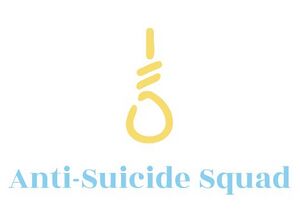Group04 proposal
Proposal
|
Close to 800 000 people die due to suicide every year, which comes up to one every 40 seconds according to the World Health Organisation (WHO). Suicide is a global phenomenon, present in many countries and is pervasive to people from all walks of life. For example, South Korea, despite being one of the fastest growing developed countries in the world, has the highest suicide rate in the world. What is more worrying is that the rate of suicides is increasing. In the last 45 years, suicide rates have increased by 60% worldwide and is now the second leading cause of death among young people after road injury.
Every life is precious. The numbers in the dataset was once a person who took their own lives, and had a ripple effect affecting their loved ones, family and friends. Our group would like to analyse factors such as gender, age, generation and GDP per capita to better understand the demographic of those who are likely to commit suicides, so that organisations such as Samaritans of Singapore or even schools and companies can identify those that are of higher risk and take measures to mitigate the likelihood of suicides for those people.
- To analyse suicide rates over the years, from 1987 to 2016.
- To analyse and compare which between regions, to identify which are the most and least impacted.
- To understand how significant each factor (age, gender, etc.) affects suicide rates.
- To discover which demographic are more likely to commit suicide.
| Dataset/Source | Data Description |
|---|---|
(https://www.kaggle.com/russellyates88/suicide-rates-overview-1985-to-2016) |
|
| Example | Takeaways |
|---|---|
|
|
This is a visualisation showing suicide rates per 100,000 people by country (1978-2009). Although it is good that the world map is present to show each country's suicide rate, the visualisation's colour usage is pretty messy. It is hard for users to capture insightful information at first glance, since they will be confused by the different colours in the visualisation.
1. Change the colour usage. Use analogous colors instead of complementary colors will help users focus on the shade of the colour rather than the meaning of the colour, which shows the number of suicides in this case. 2. Interactive tooltips. These provide detailed information about suicide rate to the user when they hover over the visualisation. |
|
|
This visualisation reveals the changes in suicide rate from 1965 to 2007. It is a good practice to insert a geometric figures inline chart to differentiate different countries. However, this visualisation looks very messy because the author put too many countries on the chart at the same time.
1. Add a filter which can let the user select the country they want to compare on the visualisation. In this way, they can comprehensively compare across countries of their choice and prevent the visualisation to be overcrowded. |
|
|
This visualisation is neat and clean. The author annotated the lines with the what it was meant to represent, which makes this line chart very easy to read.
|
|
|
This visualisation provides global suicide rate by age and income level of the country and regional distribution of global suicides.
1. Change the abbreviation "LMIC" to plain text. It takes some time for the reader to find the reference for this abbreviation below, which may lead to slight confusion. 2. When making a comparison between high-income country and low-income country, we should use each country's suicide rate as the Y-axis instead of exact suicide number.
|
References for Problem
- World Health Organisation. (2019). Suicide: one person dies every 40 seconds. Retrieved from https://www.who.int/news-room/detail/09-09-2019-suicide-one-person-dies-every-40-seconds
References for Dataset
- United Nations Development Program. (2018). Human development index (HDI). Retrieved from http://hdr.undp.org/en/indicators/137506
- World Bank. (2018). World development indicators: GDP (current US$) by country:1985 to 2016. Retrieved from http://databank.worldbank.org/data/source/world-development- indicators#
- [Szamil]. (2017). Suicide in the Twenty-First Century [dataset]. Retrieved from https://www.kaggle.com/szamil/suicide-in-the-twenty-first-century/notebook
- World Health Organization. (2018). Suicide prevention. Retrieved from http://www.who.int/mental_health/suicide-prevention/en/
References for Visualisation
- https://en.wikipedia.org/wiki/List_of_countries_by_suicide_rate#/media/File:Sucide_rate.PNG
- https://en.wikipedia.org/wiki/Epidemiology_of_suicide#/media/File:Suicide-deaths-per-100000-trend.jpg
- https://en.wikipedia.org/wiki/Epidemiology_of_suicide#/media/File:Suicides_by_race_hispanic_gender_and_age_1999-2005.png
- https://www.dailymail.co.uk/news/article-2743457/WHO-calls-action-reduce-global-suicide-rate-800-000-year.html
| No. | Challenges | Mitigation Plan |
|---|---|---|
| Inexperience with R |
| |
| Limited experience with Storyboard in Tableau |
| |
| Workload constraint since our group consists of 2 members |
|
Feel free to leave your comments! :)





